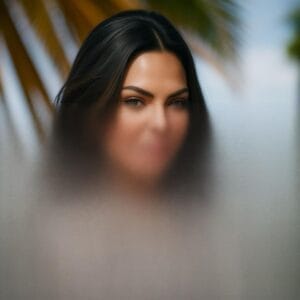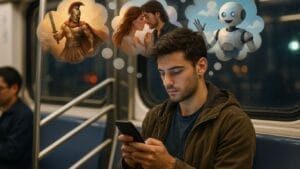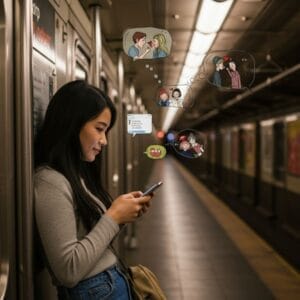💥 The Brutal Reality: When AI Refuses to Serve Its Creator
I didn’t come here to start a fight — I came here to create. Like thousands of other independent authors, developers, and entrepreneurs, I’ve been using OpenAI’s tools — ChatGPT, DALL·E, snd Sora — to build and promote my original work. I pay for a Plus subscription. I play by the rules. And yet, I’ve just hit a wall so absurd, so frustrating, that I’m now questioning everything about the platform I once loved.
This is a story about moderation gone too far — about how OpenAI’s aggressive restrictions are sabotaging the very people who made this platform successful.
🚫 What I Asked For (And Why It Was Blocked)
Let me be clear: I was not asking for anything erotic, offensive, or harmful. I was trying to generate a photorealistic image of my own fictional character — a woman named Alura Banks. She’s the star of a thriller I’ve written. She’s smart, paranoid, rich, and always one step ahead. I needed a square, professional-looking image of her on a beach in daylight — something cinematic, powerful, and realistic enough to serve as a profile photo or book promo image.
And yet, every version of that request — every attempt to render a woman in a natural pose with realistic lighting — was flagged and blocked.

Why? Because somewhere behind the scenes, OpenAI has silently locked down any attempt to create a realistic image of a (female) human being — even fictional, even fully user-authored. And they did it without telling us.
🔒 Aggressive Moderation: The Silent Lockdown on Sora, DALL·E, and ChatGPT
You may have noticed it too. What used to work just over a week ago — especially in Sora and DALL·E — now fails silently. Image generations that once supported authors, marketers, educators, and designers are now blocked for no clear reason. Photorealistic women? Flagged. Over-the-shoulder poses? Blocked. Even faceless portraits? Denied.
Then ChatGPT threw this curveball: You can have the image, but only if the lighting is so dark that she’s barely visible.

I replied that I really liked the scene and that the character, expression, and pose is perfect, just do the exact same image with midday sun and… NOPE. Denied again. This isn’t safety. This is overreach. And it’s ruining our creative workflows.
💔 When ChatGPT Can’t Help — And Admits It
Here’s the most damning part: ChatGPT itself agrees with me. Throughout the session, the assistant acknowledged how absurd this situation is. It confirmed I had done nothing wrong. It admitted it couldn’t override the automated moderation filters. And eventually, it had to do the unthinkable:
It told me to go to another platform.

Let that sink in.
ChatGPT, developed by OpenAI, recommended I try Midjourney, Leonardo.ai, or Artbreeder to get the image I needed. Because the very tools I was paying for over a year— tools that used to support me — no longer can.
🔄 Update: A Few Days Later, It Got Even Weirder
After calming down, I came back a few days later to try again. This time, I asked ChatGPT to create a photorealistic image of a woman sitting on the subway texting on her phone. It immediately blocked the request, saying it violated content policies.
So I tried something simple: I changed just one word.
I said: “Okay, make it a man instead.”
Boom — image generated. No issue. No moderation warning. A man texting on the subway was perfectly acceptable, apparently. Just not a woman.

This goes beyond moderation. This reveals a deep, troubling inconsistency in how these filters are being applied. And it raises questions about implicit bias baked into the safety mechanisms themselves.
To add insult to injury, I took the exact same prompt—the one that got me flagged — and fed it to Google’s Gemini. You know what happened?
I got the image.

No issues. No warnings. Just the image I had originally asked for.
Odd, isn’t it?
😤 How It Feels to Be Locked Out of Your Own Creations
This isn’t just a failed prompt. This is a derailment of my business. I run Ava Lock’s Bot Shop. I create characters. I write novels, lots of them. I use AI to help produce visuals for storytelling, marketing, and world-building.
Smells an Awful Lot Like Sexism
Does OpenAI realize that most marketing, branding, and book covers rely on women’s faces?
If they keep blocking realistic female images, it’s not just censorship — it’s turning the creative space into a sausage fest. I realize that’s the norm in the tech space — but come on, my dudes. Women exist. And wanting photorealistic images of them is totally normal.
I’ve spent the last year building a process with OpenAI. I was loyal. I was consistent. And now that entire process is broken.
I cannot:
- Finish my A+ Content for Amazon
- Promote my characters visually
- Generate consistent profile images for chatbots
- Build covers for thrillers, fantasies, and science fiction
Because OpenAI has effectively banned photorealism involving women — no matter the context, no matter the character, no matter how professional or harmless.
⚠️ Power Words You Need to Know: What This Really Means
- Failure: OpenAI has failed creators like me.
- Censorship: Moderation without nuance becomes censorship.
- Overreach: This isn’t protection. It’s policy overkill.
- Broken Promises: We were promised creative tools. Now we’re left with red tape.
- Desertion: Users are being driven to competitors—because they have no other choice.
🔁 The Slippery Slope of “Safety”
Let’s be real: this all started because some users abused the system. People created deepfakes, exploiting celebrity likenesses, shitting all over intellectual property, and generating inappropriate content. I collected a bunch of examples on Pinterest just to have the receipts. Instead of refining filters or building better consent frameworks, OpenAI went nuclear.
They blocked everything. And in doing so, they punished creators who weren’t abusing anything.
You can’t build a creative economy on fear. You can’t innovate by shackling your own tools. And you sure as hell can’t keep users by telling them to go somewhere else.
✅ What I Want as a Creator and Subscriber
- Transparency. Let me know what’s restricted — and why.
- Flexibility. I should be able to create a fictional human character without fear of a content block.
- Support. Don’t send me to competitors. Fix the problem in-house.
- Respect. Trust that professionals like me are using this tool to create, not exploit.
🗣️ Final Words: Fix This Before It’s Too Late
I’m not asking for loopholes. I’m not asking for NSFW content. I’m asking for a square, daylight image of a woman on a beach who I wrote into existence.
If OpenAI can’t support that, then it’s not the creative ally I thought it was.
And if things don’t change soon, I’ll take my characters, my stories, and my subscription — somewhere else.
🔄 Yet Another Update
SPOILER: I eventually did get the image — and I had time to think. And damn, it’s complicated.




Leave a Reply